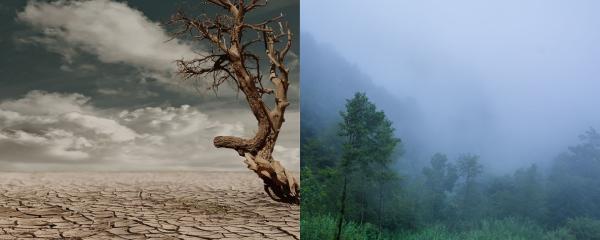
IIT Palakkad study shows how different indices used to predict drought combined with effects fof climate change can lead to different climate predictions for the future

IIT Palakkad study shows how different indices used to predict drought combined with effects fof climate change can lead to different climate predictions for the future
Snakehead fishes are predatory ray-finned fishes belonging to the family Channidae. Found across Asia and Africa, snakehead fishes are important sources of food, and are widely cultivated by humans. Snakehead fishes are known survive on wet land for up to 4 days, and are considered to be a highly invasive species, with a single snakehead female capable of laying up to 150,000 eggs in just a span of two years. So far, 38 valid species of snakeheads had been recognised.
Chillies are an indispensable part of the Indian platter and contribute heavily to our economy since India is a leading producer of chillies. A threat facing the chilli farmers is the fungal disease caused by Colletotrichum truncatum that affects the yield of the crop. In a new study, scientists have explored the mechanism behind the fungal disease, how the fungus actually attacks the plant and fruits and have also studied the genotype of the causative agents. This study, the researchers believe, can help develop mitigation plans and save farmers from an impending crop loss.
Have you ever been away from the city, away from the bustling activities and clattering? If you have, then, without all the noises of the city to distract you, you might have noticed how loud a seemingly empty field is! Birds, frogs and insects all join in on this chorus. The animals making these calls need to invest time and energy into making them, and hence are made for specific reasons, where every call counts. Often, in the animal kingdom these vocalisations are used to attract potential mating partners.
India is gifted with lush green tropical forests and an annual monsoon that revives life in most parts of the country. Yet, the country is reeling from a persistent drought, while many of our forests are losing ground to rapid development. In the midst of this change, let us look at the state of environmental education in the country. In this story, Shaurya Rahul Naralanka, a lecturer of environmental science at Manipal University reminds us of the challenges and opportunities in teaching about nature.
_2.jpg)
What do sword billed humming birds, fig wasps and acacia ants have in common? It’s the phenomenon of co-evolution, where these organisms are dependent on other organisms for survival and they reciprocally affect the other’s evolution.
The Sun gives the light and heat that sustains all life on earth. But many mysteries still surround the star and new discoveries are being made every day. On March 6th, 2012 one such event was observed with our telescopes - a standing wave was observed in one of the coronal structures on the solar surface. Find out why the event was important to our understanding of the Sun in this article.
Medical advancements and modern scientific techniques strive to solve challenges posed to human communities, especially healthcare threats. Viruses are one of the major threats and tend to make themselves resistant to drugs and evolve new mechanisms for survival by making subtle changes in their DNA called as mutations. Today among the many viruses, Dengue virus has been a serious problem causing mortality in widespread areas. Although treatments and drugs have been developed, it is essential to make sure that we’re ready to face worse cases in future.
The human body has a mechanism to maintain a certain balanced pH (potential of Hydrogen), or the degree of acidity or alkalinity in the body. Generally, this is found to be around 7.35 (on a scale of 0-14), and it varies throughout the day, depending on one’s diet and activities. The pH levels in tissues are far more sensitive.
Human beings, in their brief history, started off as hunter–gatherers hunting animals and birds, or collecting fruits and nuts to eat. They then invented agriculture, a revolutionary transformation from ‘collecting’ food to ‘growing’ it. Suddenly, acquiring food, which was one of the most important task of the early man, became a breeze. Today, in the era of technology, food production has reached new levels and so have our ways of handling the produce.